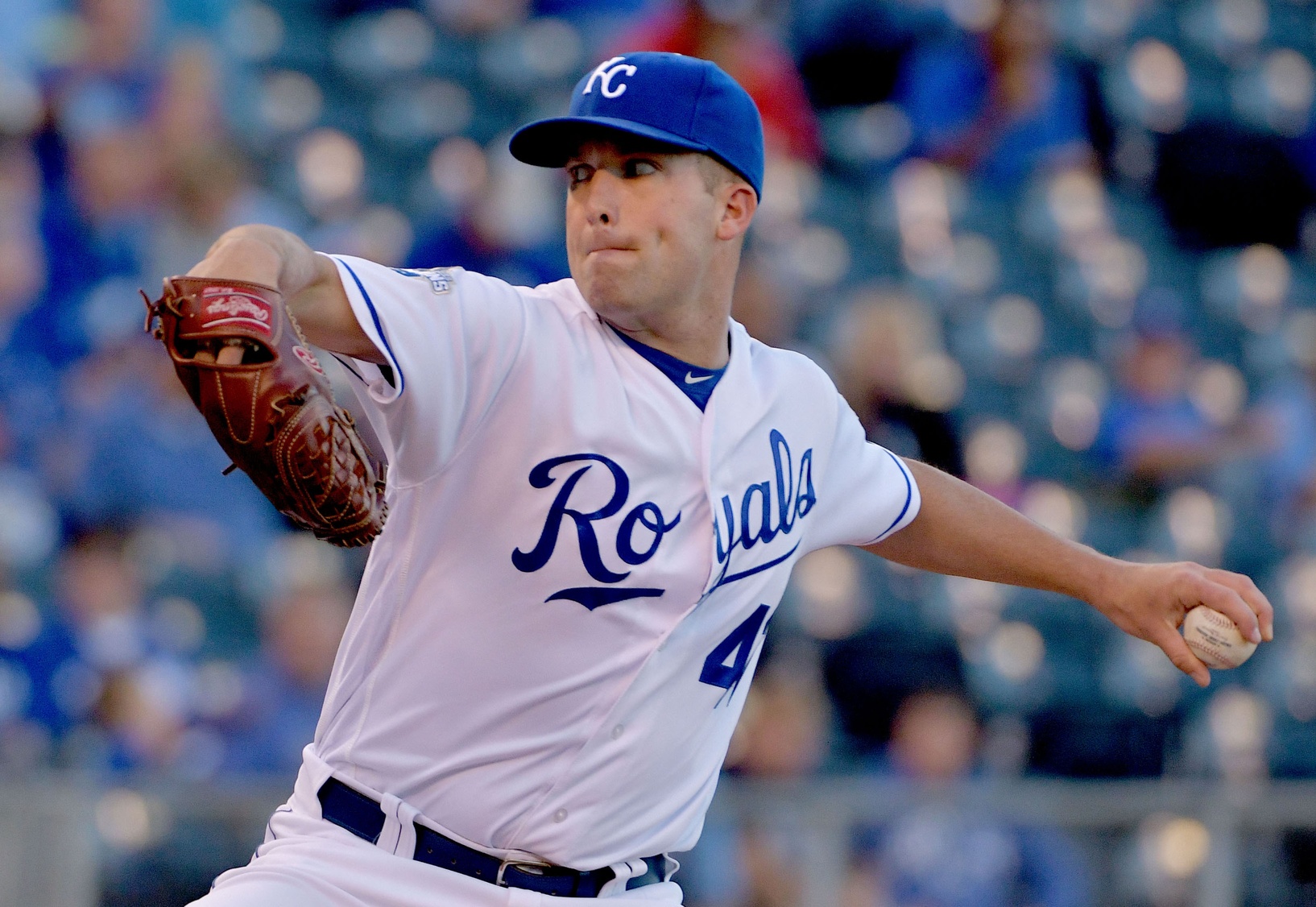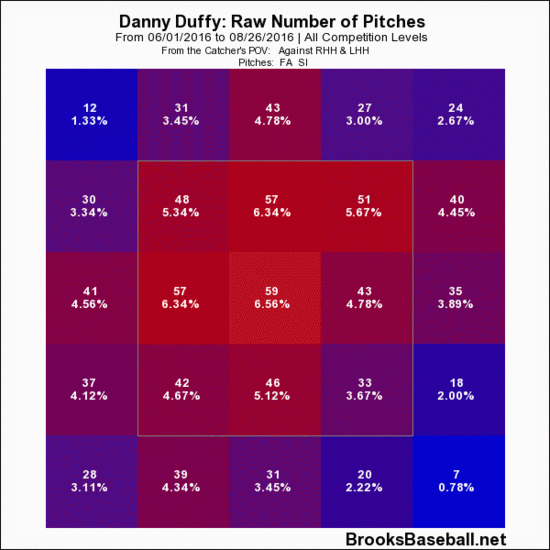Following a career year, there are deservedly higher expectations for Danny Duffy. I don’t think anyone is planning on him being a bonafide ace in 2017, but surely it’s reasonable to project something resembling a number two-ish starter. He ended the year with a 3.51 ERA and a 3.46 DRA over nearly 180 innings. Combine his performance with his love for Kansas City, and you shouldn’t be surprised to see quite a few more Duffy shirseys around the Plaza next spring.
If there’s one thing keeping some folks off of the Duffy bandwagon, though, it’s probably his finish to the season. After putting up a 2.61 ERA through his first 19 starts, Duffy’s last seven starts (beginning with a seven-run, five-inning performance on August 27) resulted in a 6.37 ERA. He was still missing bats and mostly limiting walks, but the contact he did allow tended to result in runs. He surrendered 12 dingers in those 41 innings, compared to 14 allowed in his first 120.2 innings as a starter.
Opposing batters were really teeing off on his hard stuff, as they hit .328 with a .731 slugging percentage against his four-seamer and .450 with an .800 slugging percentage against his sinker from August 27 through the end of the season. His sinker was never a great pitch for him, but compare the fastball results to a .195/.305 line allowed prior to then, and you can immediately see from where those runs came.
Prior to this season, Duffy’s career high in innings was around 150 innings, so it’s fair to wonder if the extra work took its toll on his left arm. Looking at his velocity chart throughout the season, there certainly were signs of fatigue, in the form of a decline, though maybe not as severe as you might expect. If you only focus on his work as a starter who wasn’t restricted with a pitch count (doing otherwise would be pretty foolish), Duffy saw a velocity drop of less than a mile per hour. That’s not nothing, but even after August 27 he was still averaging better than 94.5 mph with his fastballs. Less velocity didn’t help him. I also don’t think that was the sole issue.
Both of his fastballs still had plenty of movement, and the spin rates for both his four-seam and two-seam fastballs were pretty similar between the two periods. His release points were nearly identical as well, so that doesn’t appear to be a factor.
No, the biggest driving force for Duffy, as it is with just about every pitcher, was his location. I’m going to show you a moving picture now, displaying Duffy’s fastball locations from each set of starts.
There are a couple of things that immediately jump out. First, you see a shift of the concentration of pitches, from up in the zone to down. You’ll hear a lot of commentators talk about pitchers wanting to keep the ball down, but a pitcher like Duffy doesn’t really want to live down in the zone. His fastball is most effective at the top of the zone and just above it, where he can induce popups and medium-depth fly balls. With so many players in today’s game having swings tailored to attack the lower third, Duffy needs to elevate his heater to exploit their weaknesses. As the season wore on, Duffy was not able to spot his fastball up quite as well. As a result, batters crushed the pitches in their nitro zone.
The second thing you’ll notice is the super bright red square right in the middle of the strike zone. That’s another spot where batters like to see pitches. The bright redness is a bad thing for a pitcher. Too often in those last few starts, Duffy grooved a pitch and paid the price. As a matter of fact, when an at-bat ended on a middle-middle fastball during that time, opponents slugged 1.563.
If there’s a silver lining here, it’s that this is a correctable problem. This isn’t Duffy losing his control. This isn’t the league learning to hit him when he’s on. This is a pitcher who threw more pitches than he ever had before, who was ever-so-slightly off with his command. His other numbers are still impressive, and still suggest he’s capable of shoving on a regular basis. He likely needs just a bit of rest, and a bit of time to build up his stamina over the winter. It’s not a guarantee, but a full offseason should return Duffy to his maximum level of gnarness.

